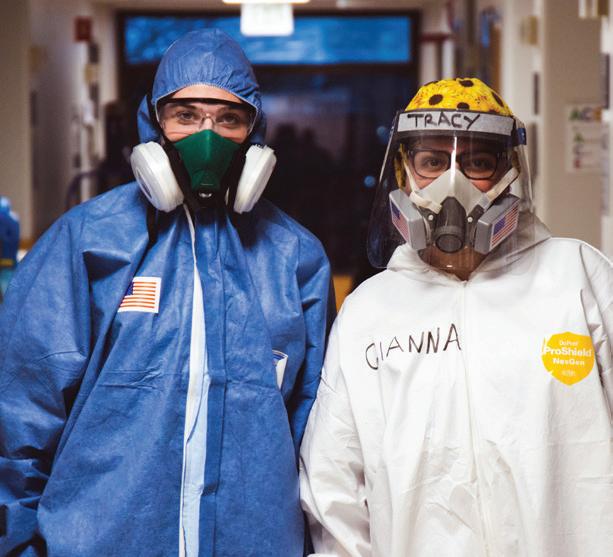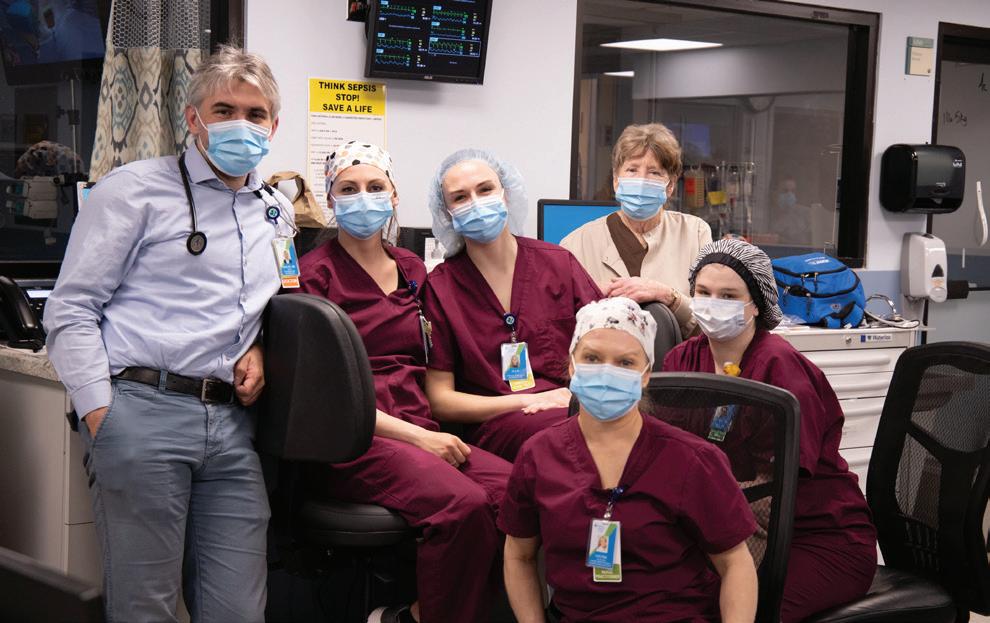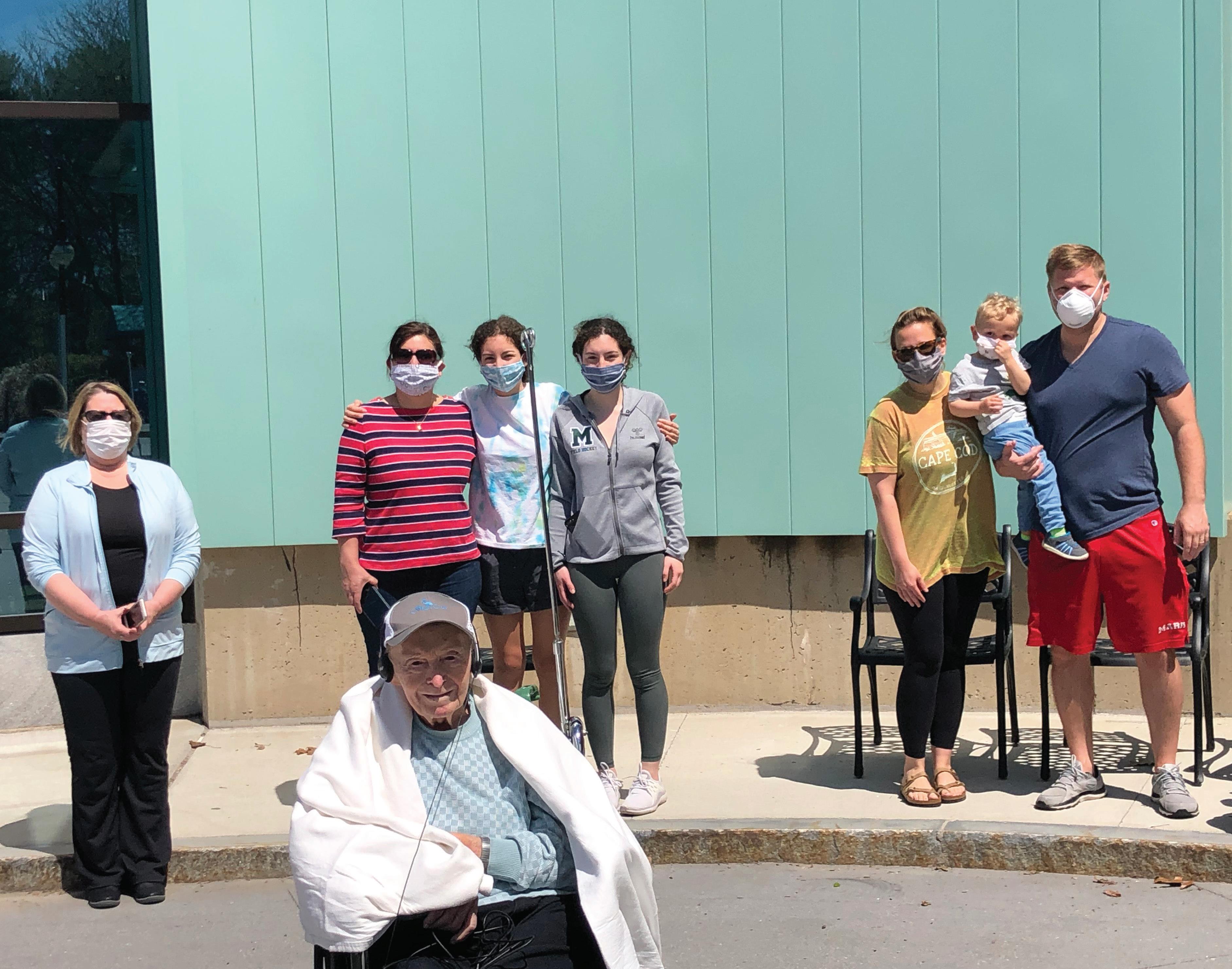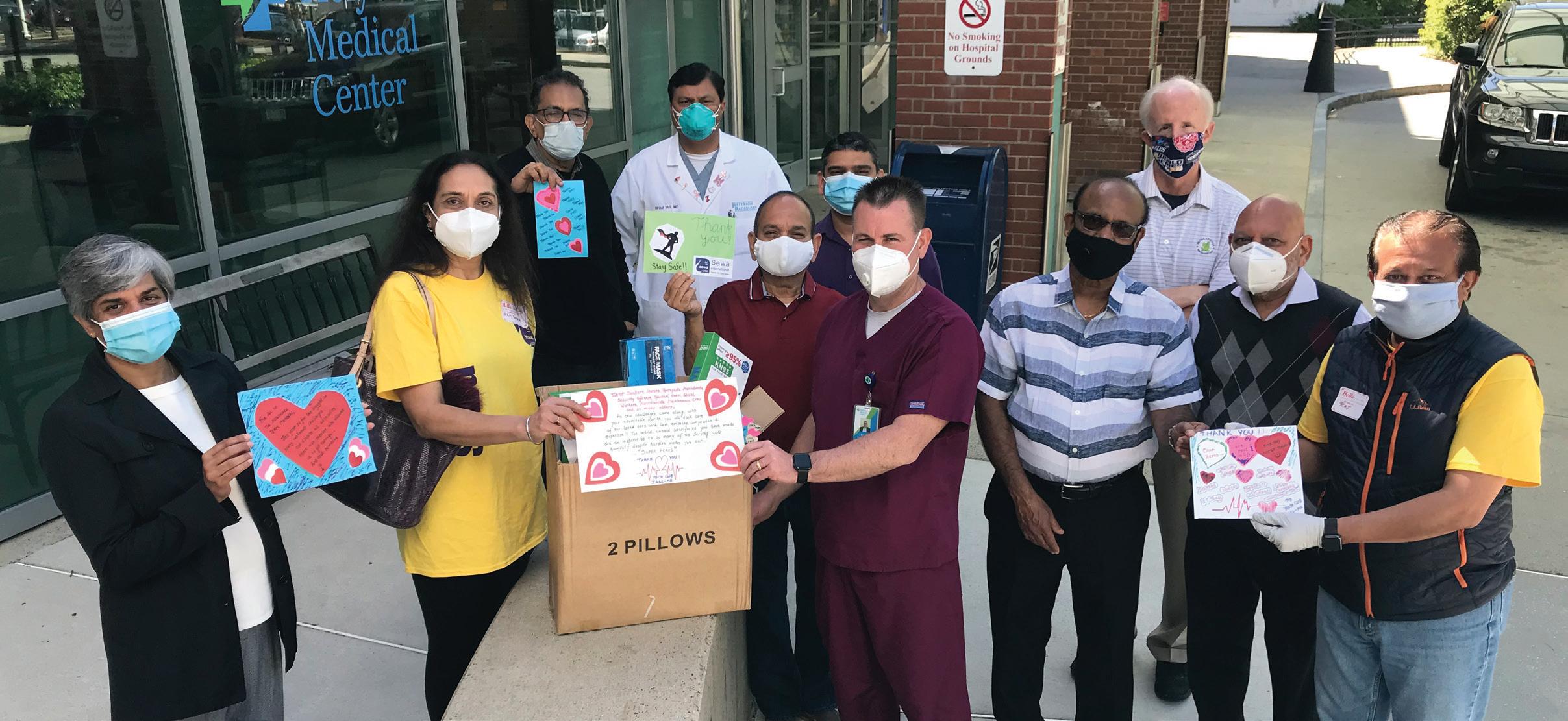
5 minute read
TELEHEALTH COMES OF AGE When COVID-19 hit, providers
TELEHEALTH COMES OF AGE
WHEN COVID-19 HIT, PROVIDERS WORKED HARD TO TRANSITION WITHIN A WEEK TO NEARLY 100 PERCENT VIRTUAL APPOINTMENTS.

BEFORE THE PANDEMIC, telehealth— Within a week of non-essential medical care provided either by phone services and businesses shutting down, or video call—was, for the most part, Holyoke Medical Group (HMG) and River used only to give patients access to Valley Counseling Center (RVCC) both specialty care they could not otherwise transitioned from almost no telehealth have received. That quickly changed in visits to effectively 100 percent virtual care. late March. With COVID-19 cases growing And telehealth appears to be here to stay. and stay-at-home orders in effect, doctors “We’re still doing 70 percent of understood that an alternative to in-person patient care via telehealth,” says Kartik visits would be needed, and needed fast. Viswanathan, MD, Medical Director of HMG, who says he anticipates that telehealth will account for 20 to 30 percent of patient visits even after an effective vaccine for COVID-19 becomes widely available. “The pandemic gave telehealth a foothold,” he says. “Now it’s going to be a new normal. People won’t want to give up this valuable option.” In addition to helping patients avoid potential exposure to COVID-19, telehealth offers other advantages Kartik Viswanathan, MD Elaine Campbell, Psy.D for patients, including saved time. “They don’t have to drive, park and sit in a waiting room,” says Dr. Viswanathan. “Even if patients have to wait for their provider to come on the line, they don’t mind because they can continue working, folding laundry or paying bills while they wait.”
Elaine Campbell, Psy.D., Senior Director of Outpatient Services for RVCC, agrees that telehealth is here to stay. “Although it’s not right for all clients, telehealth offers distinct advantages for many,” she says. “For example, for patients with limited access to transportation, as well as those with poor physical health or disabilities, not having to travel to receive mental health care can be a significant advantage.”
VIDEO CALLS PREFERRED For both mental and physical healthcare, doctors prefer to do virtual appointments via video call, rather than by phone. “Some patients aren’t comfortable downloading apps or don’t have a smartphone,” says Dr. Viswanathan. “In those cases, we try to make their appointments when someone who can help is home with them.
“Video is much different from voice only,” he continues. “Seeing their provider reduces feelings of isolation for patients, and it adds to our clinical judgment. When I can see a patient, I can get a good idea of how they’re feeling.”
Another advantage of video calls: “In many cases,” says Dr. Campbell, “it can be helpful to see the patient in their home environment.”
In addition, patients can use video to show a rash, their throat if it’s sore or their feet if they’re swollen. And if they can’t pronounce a medication they’re taking, they can just show the prescription bottle to the provider.
For Dr. Campbell, seeing her own team and her colleagues at HMG convert from in-person to telehealth visits so quickly was an amazing process. “It demonstrates the commitment our doctors and therapists have to servicing our patients and our communities. I’m thankful we’ve been able to transform so quickly to care for our clients.”
✱To make a telehealth appointment, call your provider as usual. The offi ce will share any information needed to prepare for a virtual consultation. Holyoke Medical Group: 413.535.4800. River Valley Counseling Center: 413.540.1234.
Heroes
WORK HERE


OUR PROVIDERS and staff have risen to—and well above—the unprecedented challenges of caring for patients with COVID-19. Holyoke Medical Center is proud and grateful beyond words for the indomitable spirit and incredible work done by our teams on the front lines.


2
✱To see more photos, search #hmcfrontline on Facebook, Instagram and Twitter.

3
6




9


12


13


14 15

16


17
1 Emergency Department team members gather for a group picture with their elastomeric respirators. 2 Front entrance screeners: Maria, Frances and Katelyn. 3 ICU team members: Ashley, Allie, Mariann, Olivia and Deborah. 4 Registered Nurses Tracy and Michelle in full PPE on the COVID-19-positive Soldiers’ Home Unit. 5 Colleen gifts scratch tickets to one of the Soldiers’ Home residents—a highly desired indulgence for many of the veterans here at HMC! 6 Registered Nurses: Nancy, Alycia and Raquel. 7 Blood Donor Center team members: Marlene and Jacinda. 8 Our Environmental Services team members, such as Susan, do the important work of keeping the hospital clean. 9 Matching scrubs, caps and respirators can make it difficult to tell who everyone is, but we know these two Registerd Nurses: Amy and Karina! 10 Action Ambulance gifted ED team members with shirts that say “Courage and Sacrifice are Timeless” and feature an illustrated COVID-19 adaptation of the Iwo Jima flag raising. Top, left to right: Isabelle, Amy, Dr. Peters, Kyle and Christian. Bottom, left to right: Ermelinda and Jenna.
11 Dawn, RT(R), waits to enter an emergency patient room with the portable X-ray machine. 12 Night-shift team members in full protective equipment: Amber and Gianna. 13 Pharmacy Technician, Marie, reloads the Pyxis medication dispensing system. 14 Nursing leaders step outside for a “fresh air” meeting. 15 Bill moves a pallet of rain ponchos, which will be used as protective gowns by staff. 16 ICU team members (clockwise): Dr. Pavlov, Jamie, Alexandra, Maureen, Shannon and Lucy. 17 One of the quieter moments in Area 19, where patients with fever/cough/ flu symptoms were tested and treated.






